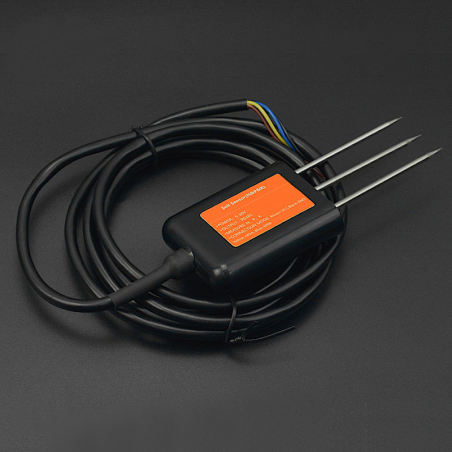
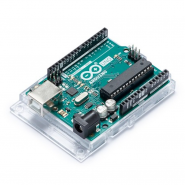
Arduino UNO R3 (original)
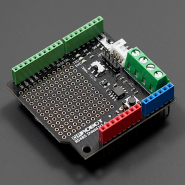
Shield RS485 para Arduino - DFRobot...
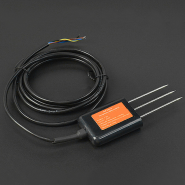
Sensor IP68 de Temperatura e Humidade...
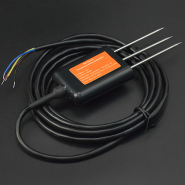





Este sensor é adequado para detetar a fertilidade do solo. O mesmo pode ser alimentado com uma tensão entre os 5 e os 30V e tem um saída RS485. Este sensor é capaz de detetar nitrogênio (N), fósforo (P) e potássio (K). Pode ainda ser usado com um Arduino UNO R3 e uma placa de expansão TTL para 485 para configurar rapidamente os testes. O nível de proteção deste sensor é IP68, e é enchido a vácuo e selado com resina epóxi preta retardadora de chama . O material da sonda é feito de aço inoxidável 316, que é à prova de ferrugem, à prova de água, anti-corrosão, resistência à corrosão salina-alcalina e resistência à eletrólise, o que faz com que este sensor possa ficar enterrado no solo durante bastante tempo.
Se quiseres saber mais sobre este produto consulta a sua Wiki Page.
DESCRIÇÃO EM PORTUGUÊS BREVEMENTE DISPONÍVEL
Se tiver alguma dúvida neste produto não hesite em contactar-nos.
*Atenção: as imagens são meramente ilustrativas.
The Soil Sensor is a state-of-the-art device designed to provide rapid, accurate data on soil nitrogen, phosphorus, and potassium levels. This critical information allows for the optimization of soil fertility, creating the ideal environment for plant growth. With a wide voltage power supply range of 5-30V and data output via RS485 using the reliable MODBUS-RTU protocol, the Soil Sensor offers quick response times and stable, reliable output. It is compatible with Arduino UNO R3 and TTL to 485 expansion board, enabling swift setup of a testing environment.
Constructed with a high protection level of IP68, the soil sensor is vacuum-sealed with black flame-retardant epoxy resin. The probe is crafted from 316 stainless steel, offering rust-proof, waterproof, and anti-corrosion properties. It also resists salt-alkali corrosion and long-term electrolysis, making it highly durable even in soils with high salt content. Its compact size allows for long-term burial in various soil types without affecting its performance.

Wiring Diagram of soil sensor and Arduino Uno

Probe Material - 316 Stainless Steel
The Soil Sensor finds extensive applications in various soil environment detection scenarios. These include agricultural irrigation, greenhouses, flowers and vegetables cultivation, grassland and pastures, rapid soil testing, plant cultivation, scientific experiments, and grain storage. Its versatility and reliability make it an invaluable tool in modern agriculture and soil science research.
Note: Nitrogen, phosphorus, and potassium sensor data can only be used as a reference and cannot be as accurate as professional instruments.
Nitrogen (N): Nitrogen is a component of organic matter such as proteins, nucleic acids, and amino acids in plants, and plays an important role in plant growth and development. Nitrogen fertilizer can promote the growth of plant leaves, increase the green part of the plant, and improve the efficiency of photosynthesis. Lack of nitrogen will cause yellowing of plant leaves and retarded growth, affecting plant yield and quality.
Phosphorus (P): Phosphorus is a component of important compounds such as DNA, RNA, and ATP in plants, and plays a key role in the energy metabolism, growth, and development of plants. Phosphorus fertilizer can promote plant root development and flower bud differentiation, and increase plant flowering and fruiting. Lack of phosphorus will lead to short root systems and poor flower bud differentiation, affecting plant reproductive growth and yield.
Potassium (K): Potassium is an important ion in plants that regulates osmotic pressure and maintains ion balance. It plays an important role in plants' water balance and nutrient absorption. Potassium fertilizer can promote plant root growth and nutrient transport within the plant, increasing plant stress resistance and yield. Lack of potassium will cause plant leaf margins to scorch, reduce fruit quality, and affect plant growth and yield.

How to install and use the soil sensor
5-30V wide voltage power supply
RS485 output, can be used with Arduino
High precision, fast response, and stable output
Stainless steel probe can be buried in soil or water for a long time
Resin vacuum filling and sealing, IP68 protection level

Power supply voltage: DC5-30V
Power consumption: 0.15W@12V
Output mode: RS485
Detection parameters: Nitrogen (N), Phosphorus (P), Potassium (K)
NPK range: 0-2999mg/kg (mg/L)
Resolution: 1mg/kg (mg/L)
Accuracy: ≤5% (subject to the actual measuring instrument)
Protection level: IP68
Probe material: anti-corrosion special electrode
Sealing material: black flame-retardant epoxy resin
Working temperature: 0°C~+55°C
Cable length: 2m
Size: 123*45*15mm
Project: How to Build a DIY Smart Greenhouse (NPK) and Weather Station
Introduction: The IoT agricultural monitoring system, utilizing Unihiker as the main board and various sensors, collects soil nutrients and environmental data. It also includes a weather station for outdoor monitoring. Data is wirelessly uploaded to a local server for real-time analysis, supporting future AI development. The system aids in detecting, controlling, and researching plant growth.
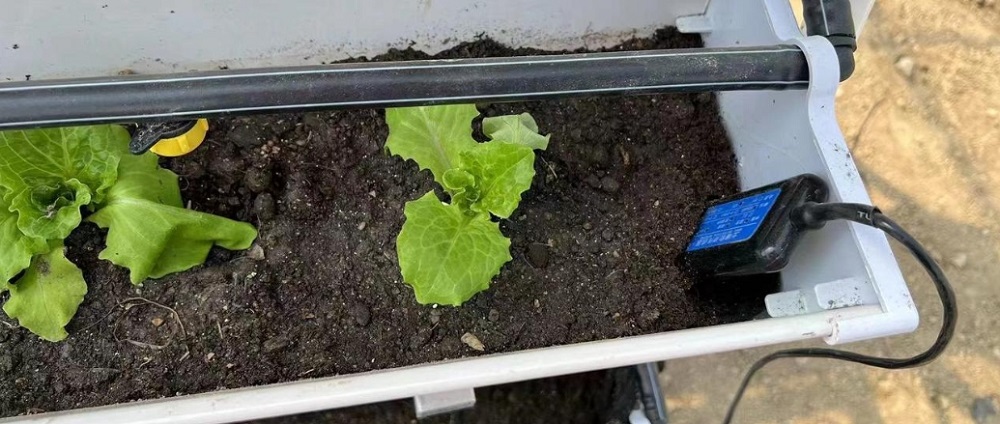
RS485 Soil Sensor (N&P&K) x1
Produtos Associados



